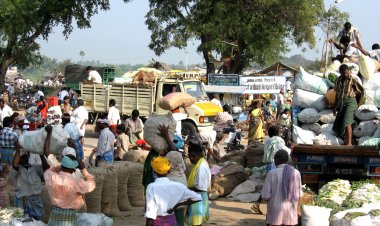Turmeric to change fortunes of farmers in Kushinagar
The state government of UP is expected to declare turmeric as the one district one product (ODOP) of Kushinagar. It will boost the prospects of the wonder spice in the domestic and international markets. ODOP is among the flagship schemes of the Yogi Adityanath government.

Lucknow
Turmeric (haldi), a traditional Indian spice with medicinal properties, is set to change the fortunes of farmers in the backward Kushinagar district of Eastern Uttar Pradesh (UP).
The state government is expected to declare turmeric as the one district one product (ODOP) of Kushinagar. It will boost the prospects of the wonder spice in the domestic and international markets.
ODOP is among the flagship schemes of the Yogi Adityanath government. It is aimed at reviving and fortifying the traditional and indigenous industries across 75 districts in UP.
With turmeric becoming the ODOP of Kushinagar, the Buddhist pilgrimage site has the potential to join the league of high-volume harvest districts of Erode, Sangli and Nizamabad in other states.
Kushinagar has a long history of turmeric cultivation. It is mainly cultivated in Dudahi, Ramkola, Bishunpura, Khadda, Severhi, Kaptanganj, Kathkuiyan and Fazilnagar blocks.
In 2014, the Sustainable Human Development Association (SHDA), an organization working among farmers in collaboration with Tata Trusts, started a planned effort to cultivate the crop.
According to official data, turmeric is cultivated over an area of 800 hectares in Kushinagar. Ramkola alone accounts for 200 hectares of acreage.
At present, about 10,000 farmers in the district are associated with the cultivation of turmeric. The yield per hectare is about 36.77 quintals.
However, the yield of local and developed species in the trial ranges from 150 to 400 quintals respectively. Now, the state government has the onerous task of making turmeric a brand like ‘Kala Namak’ rice of Siddharthnagar district.
According to agricultural officer BM Tripathi, in the agro climate zone of Kushinagar, Rajendra Sonia, Rajendra Sonali, and Narendra Haldi-1 are the highest-yielding species if the farmers are trained in improved methods of farming.
If quality seeds and institutional support with regards to processing, packaging and marketing of the produce are provided, turmeric can change the fortunes of the state farmers.
Meanwhile, a company comprising 1,150 farmers has been formed to promote turmeric cultivation. While all farmers are stakeholders, a processing unit of limited capacity has been set up.
Turmeric is regarded as the most effective nutritional supplement. Being antibacterial and anti-inflammatory, turmeric is beneficial in pain, injury, sprain, and dental diseases. Turmeric has a long history of use in Asian, African and Caribbean cuisines.
The spice helps in boosting immunity and purifies the blood. Not only is it beneficial for the skin but melatonin promotes sound sleep. Turmeric gets its yellow colour from its main ingredient known as curcumin, which inhibits the growth of cancer cells.



 Join the RuralVoice whatsapp group
Join the RuralVoice whatsapp group








































